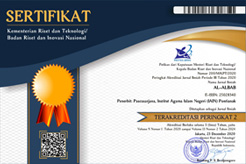CULTURE, RELIGION, AND ENGLISH TEACHERS’ CONTRIBUTION IN INDONESIA
Abstract
Keywords: Native English Speaking Teachers (NESTs), Non-Native English Speaking Teachers (NNESTs), Student, Culture, Religion.
Full Text:
PDFReferences
Brown, H. (2007). Teaching by principles: an interactive approach to language pedagogy. New York: Pearson Education.
Harmer, J. (2001). The practice of English language teaching. England: Person Education Limited
McArthur, T. (1998). The English Languages. Cambridge: Cambridge University Press.
McKay, S. (2002). Teaching English as an international language. New York: Oxford University Press.
Medgyes, P. (2006). When the teacher is a Non-Native Speaker. In M. Celce-Murcia (Ed.) Teaching English as a Second or Foreign Language (pp. 429-442). Beijing: Foreign Language teaching and Research Press.
Mizuno, C. (no year). Non-native English speakers of English teaching in Japan – critical perspectives on TESOL in an educational context. Retrieved November 4, 2010 from:
http://www.paaljapan.org/resources/proceedings/PAAL9/pdf/MizunoCh.pdf.
Nakata, Y. (2010). Improving the classroom language proficiency of non-native teachers of English: what and how?. RELC journal (41)1 76-90.
Nunan, D. (1999). Second language teaching and learning. Boston : Heinle & Heinle.
Oka, H. (2004). A Non-native Approach to ELT: Universal or Asian?. Retrieved November 4, 2010, from:
http://www.asian-efl-journal.com/images/04_ho.pdf.
Pasternak M, and Bailey KM (2004) ‘Preparing Nonnative and Native English-speaking Teachers: Issues of Professionalism and Proficiency’. In Kamhi-Stein LD (ed.) Learning and Teaching from Experience: Perspectives on Nonnative English-speaking Professionals. Ann Arbor: The University of Michigan Press, 155-75.
Rampton, M. 1990. Displacing the ‘native speaker: expertise, affiliation, and inheritance. ELT journal 44/2, pp. 97-101.
Seidlhofer, B. (1999) Double standards: teacher education in the Expanding Circle, World Englishes, 18(2):233-244.
Shishavan, H. The relationship between Iranian English language teachers’ and learners’ gender and their perception of an effective Engliah language teacher. English Language Teaching. English Language Teaching Journal 3(3) www.ccsenet.org/elt. retrieved on November 4th, 2010.
Zacharias, N. (2003). A survey of tertiary teachers’ beliefs about English Language Teaching in Indonesia with regard to the role of English as a global language. http://www.asian-efl-journal.com/thesis.php. 20 October 2010
Article Metrics
 Abstract views: 2302
Abstract views: 2302
 PDF views: 1032
PDF views: 1032











